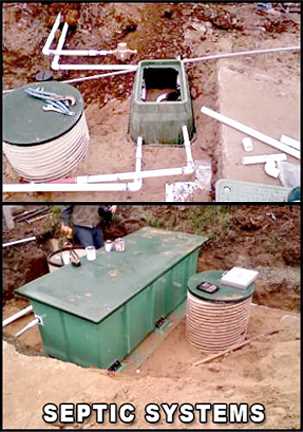
Water Septic Tanks & Systems Installation & Repair
We specialize in complete septic tank installation and maintenance throughout Northern California and the San Francisco East Bay region. Our expert team designs custom septic systems that comply with all local ordinances while providing decades of reliable service.
In the Northern California area, a typical septic tank consists of a tank (or sometimes more than one tank) of between 4000-7500 liters (1,000 and 2,000 gallons) in size connected to an inlet wastewater pipe at one end and a septic drain field at the other. These pipe connections are generally made via a T-pipe, allowing liquid entry and exit without disturbing any crust on the surface.
Today's septic tank design usually incorporates two chambers (each of which is equipped with a maintenance hole cover) which are separated utilizing a dividing wall with openings located about midway between the floor and roof of the tank. We specialize in septic systems that help property owners comply with all local regulations while providing long-lasting performance.
A properly designed and normally operating septic system in the Northern California region is odor free and, besides periodic inspection and pumping of the septic tank, should last for decades with no maintenance.
Generally, a well-designed and maintained concrete, fiberglass, or plastic tank should last about 50 years in the Northern California region.